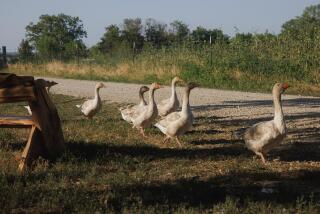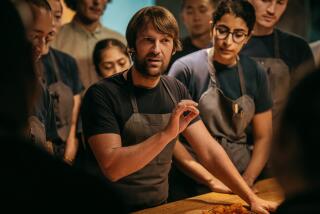Overpopulation: Why ingenuity alone won’t save us
It’s easy to grasp that in a national park, balance must be maintained between predators and prey, lest the ecosystem crash. But when we’re talking about our own species, it gets harder. The notion that there are limits to how much humanity this parkland called Earth can bear doesn’t sit easy with us.
The “nature” part of human nature includes making more copies of ourselves, to ensure our genetic and cultural survival. As that instinct comes in handy for building mighty nations and dominant religions, we’ve set about filling the Earth, rarely worrying that it might one day overfill. Even after population quadrupled in the 20th century, placing unprecedented stress on the planet, it’s hard for some to accept that there might be too many of us for our own good.
A recent essay in the New York Times by University of Maryland geographer Erle C. Ellis, argued that population growth is actually the mother of invention, that it inspires new technologies to sustain ever more humans and to coax more from the land. And as Pope Benedict XVI wrote in his 2009 encyclical “Caritas in Veritate,” “On this Earth there is room for everyone … through hard work and creativity.”
In 2011, I visited the Vatican’s Pontifical Academy of Sciences, which had warned in 1994 that it was “unthinkable to sustain indefinitely a birthrate beyond 2.3 children per couple…. The contrary demographic consequences would be unsustainable to the point of absurdity.” Nevertheless, the church still encouraged population growth.
With a billion humans already malnourished, I asked the academy’s director where would we get food for nearly 10 billion by midcentury? Clearing more forests for farming would be disastrous. Beset by floods and erosion, China alone has been spending $40 billion to put trees back. And force-feeding crops with chemistry has backfired on us, with nitrogen runoff that fouls rivers, deadens New Jersey-sized chunks of the oceans and emits large quantities of two greenhouse gases: carbon dioxide and nitrous oxide.
The answer, I was told, would be through increased yields using new genetically modified crops from the centers of the Green Revolution: the International Maize and Wheat Improvement Center in Texcoco, Mexico, and the International Rice Research Institute in the Philippines.
The Green Revolution’s high-yield, genetically selected strains more than doubled grain harvests during the 1960s. It is often cited as having triumphed over dire predictions of famines caused by population growth outpacing food production, which were famously made by economist Thomas Robert Malthus in “An Essay on the Principle of Population” and echoed by his latter-day analogues, Paul and Anne Ehrlich, who wrote “The Population Bomb.”
However, when I went to the maize center in Texcoco and to the rice institute in the Philippines, I found no food scientists who agreed with that triumphalist scenario. Instead, I learned, Green Revolution founder Norman Borlaug had warned in his 1970 Nobel Peace Prize acceptance speech that his work essentially had only bought the world time to resolve overpopulation.
“There can be no permanent progress in the battle against hunger until the agencies that fight for increased food production and those that fight for population control unite in a common effort,” Borlaug said.
So what are we facing now? In June 2013, the United Nations revised an earlier estimate that population would level off at 9.2 billion by midcentury; it now says our numbers will keep growing, hitting nearly 11 billion by the end of the century, with no sure peak in sight.
“In the next 50 years,” a worried Hans-Joachim Braun, Borlaug’s successor at the maize and wheat center, told me, “we will need to produce as much food as has been consumed over our entire human history.”
Geneticists there and at the rice institute showed me experiments testing how to hot-rod photosynthesis, in hopes of increasing plant productivity up to 50% more than previous Green Revolution yields, and possibly to give grains enough energy to fix their own nitrogen, which could minimize artificial fertilizer needs. But, everyone acknowledged, even if it can be done, commercially viable enhanced-photosynthesizing crops are at least 25 years away. And by then, there will be billions more of us.
Moreover, food technologists face another growing problem spawned by growing populations: As ever more of us expel carbon, our overloaded atmosphere overheats the planet. Grains have temperature thresholds; for every 1º C of warming, the National Academy of Science reports, harvests drop 10%. With our world now headed beyond a 2º C increase at present emission rates, population will be up, food production down, irrigation water scarcer — and coastal dikes may have to protect much of the world’s rice production from encroaching sea water. All in all, an expensive scenario. Rosy predictions that northern Canada and Siberia will be breadbaskets in a warmer world neglect that their conifer-covered, acidic soils will take millenniums to adapt to the needs of crops.
The late economist Julian Simon, who believed that human ingenuity ensured that resources would never run out, won a 1980 bet with Paul Ehrlich that prices of five commodity metals wouldn’t rise due to growing scarcity over the coming decade. (As the Economist and others later reported, in subsequent decades Ehrlich would have won, yet their bet is still often cited to discredit his warnings.) In 1994, Simon, ever the cornucopian, declared, “We now have the technology to feed, clothe and supply energy to an ever-growing population for the next 7 billion years.”
With world population then growing by 1.4% annually, Paul and Anne Ehrlich checked Simon’s math and responded that this was unlikely: Within 6,000 years, the mass of human population would equal the mass of the universe.
Today, we’re growing at a slightly slower rate, but the U.N. still projects more than 3 billion more of us this century. With nearly 20,000 children now dying of hunger daily, and with temperatures rising, we’re running out of tricks to squeeze more out of a planet already bursting its seams. To argue that even though the Earth can’t grow, we still can, is dreaming.
Alan Weisman is the author of “The World Without Us.” His book “Countdown: Our Last, Best Hope for a Future on Earth?” will be published this week.
Alan Weisman is the author of the 2007 bestseller “The World Without Us.” His book “Countdown: Our Last, Best Hope for a Future on Earth?” will be published this week.
¿
More to Read
A cure for the common opinion
Get thought-provoking perspectives with our weekly newsletter.
You may occasionally receive promotional content from the Los Angeles Times.










